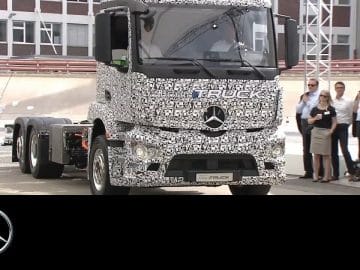One of the most infuriating problems that the world faces now on a global scale, for highly urbanized areas at least, is traffic congestion… the worsening traffic problem. The Texas Transportation Institute estimates that for every hour being stuck in traffic, $21 is wasted in terms of time and fuel.
On average, an American urban commuter is stuck in traffic for 34 hours in a year. Each driver in the U.S. suffers from an average annual cost of $713 due to traffic jams. About 1.9 billion gallons of fuel are wasted in total due to congestion – this is equivalent to more than 5 days’ worth of total daily fuel consumption in the United States.
The situation gets worse by the day. There are several engineering solutions to curb this problem, but they work only on a small scale or some just fail miserably.

But faculty from Kennesaw State’s Southern Polytechnic College of Engineering and Engineering Technology hope that their proposal will help.
Composed by Bill Diong, associate professor of electrical engineering, Ying Wang, associate professor of mechatronics engineering, and Jidong Yang, assistant professor of civil engineering, the team has explored an improved and cost-effective Bus Rapid Transit (BRT).
BRT is a bus-based transit system used in high-volume metropolitan areas to transport passengers quickly and on time to their destinations. It’s not a new system. But their concept, called the Slim Modular Flexible Electric Bus (SMFe-bus), is focused on a new type of bus that is more attractive and affordable, which leads to increased transit use and reduced car traffic.

“Our concept is aimed at making improvements that would convince more people to not use their cars for their work commutes and choose instead to take a BRT bus,” said Diong. He believes that more people are interested in taking the transit which provide speedy commutes, and convenient and on-time schedules not guaranteed by conventional bus systems.
The SMFe-bus concept that the team designed is made of a slimmer frame that can travel in narrower dedicated lanes. It is a semi-autonomous vehicle – it has a lead module with a human driver and other modules without drivers. These modules are not physically attached but strung together, propelled individually by in-wheel electric motors.

This is what sets their BRT concept different from other bus transit systems. The modules are uncoupled, which leaves a small gap of space between each self-driving unit. There is coordination among modules which are programmed to have spacing and alignment in a ‘virtually coupled’ manner.
The lead module has sensors that gauge its movements. The following modules are designed to stay close, but not close enough that there is an allowance to avoid collision during sudden brakes. This is only one of the safety features built into the system of the SMFE-bus.

Having this design allows the bus capacity to be flexible, which is critical factor in mass transportation systems. Modules can be added or removed easily anytime of the day depending on the varying passenger demand.
According to Yang, buses of this type are deemed to have favors in their pathways. Especially in intersections, they have the signal priority or the ability to change traffic lights that allows them to go first. This ultimately aids the transit system to get passengers from A to B on time. Yang has feasibility projects underway to push this operation, with two potential BRT corridors in metro Atlanta.

The researchers are also looking at integrating smart controls in their bus anchored on autonomous vehicle technology. Wang said, “Our prototype explores the neural network and benefits from artificial intelligence technology, and how a machine, or robot, learns how to accept information from humans.”
Admittedly, the research team said that this model is more expensive than traditional buses. But they assert that having this system could result in substantial cost savings in land acquisition, roadway construction and service operation. There could be as much as 20 percent cost savings on a BRT project in cities with dense populations and pricey real estate.
To further grasp the benefits of this BRT, the team has involved four undergraduate and three graduate engineering students to work on a SMFe-bus prototype. The model is being optimized to operate at a top speed of 65 miles per hour.


















